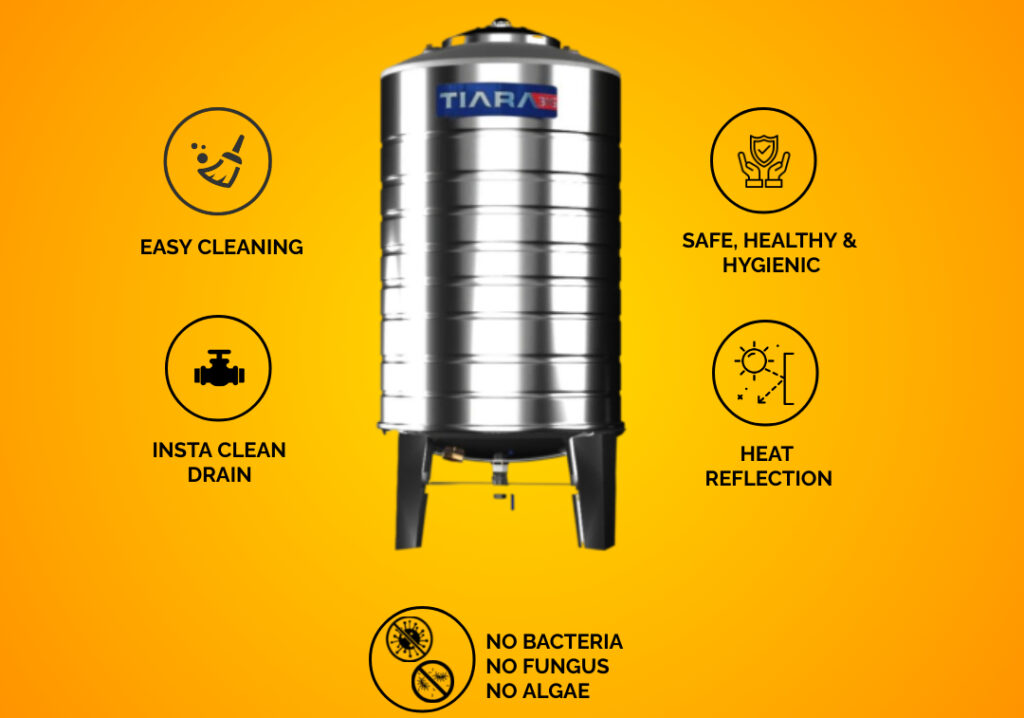
The choice of material for water storage is crucial, as it directly impacts the quality, safety, and longevity of the stored water. Among the various options available, food-grade stainless steel has emerged as the gold standard. Renowned for its exceptional properties, it ensures safe, pure, and high-quality water storage. Here’s why food-grade stainless steel outshines other materials when it comes to water storage.
Unparalleled Corrosion Resistance
Food-grade stainless steel, such as the 304 and 316 grades, offers exceptional resistance to corrosion. Its high chromium and nickel content form a protective oxide layer on the surface, shielding the metal from rust or chemical reactions. Unlike plastic, which can degrade over time or glass, which can be fragile, stainless steel remains sturdy and safe in varied conditions, including exposure to moisture and fluctuating temperatures. This ensures the water remains uncontaminated and pure.
Neutrality and Taste Preservation
One of the standout features of food-grade stainless steel is its neutrality. It does not leach chemicals, metallic flavors, or odors into the stored water. Materials like plastic can release harmful compounds such as BPA or phthalates, while other metals might impart a metallic taste. In contrast, stainless steel maintains the natural taste of water, making it a preferred choice for drinking water storage.
Hygienic and Easy to Maintain
The smooth, non-porous surface of food-grade stainless steel inhibits the growth of bacteria, algae, and other microorganisms. It is highly resistant to biofilm formation, which can compromise water quality in materials like plastic or concrete. Additionally, stainless steel is easy to clean and sanitize. A simple rinse or cleaning with mild detergents ensures that the storage container remains hygienic and safe for repeated use.
Durability and Longevity
Food-grade stainless steel is incredibly durable, making it ideal for long-term water storage solutions. Unlike plastic, which can warp or crack, and glass, which is prone to breakage, stainless steel containers withstand impact, pressure, and harsh environmental conditions. Its durability reduces the need for frequent replacements, making it a cost-effective and sustainable choice over time.
Environmentally Friendly Option
Stainless steel is 100% recyclable and does not contribute to plastic pollution. By choosing stainless steel water storage solutions, consumers contribute to reducing environmental waste and promoting sustainable practices. This is particularly important in today’s efforts to combat environmental challenges like plastic pollution and resource depletion.
Versatility in Applications
From household water storage tanks to industrial water systems, food-grade stainless steel caters to diverse needs. It is also commonly used in portable water bottles, ensuring safe hydration on the go. Its adaptability and performance in various scenarios highlight its superiority as a water storage material.
Conclusion
Food-grade stainless steel stands out as the best material for water storage due to its corrosion resistance, purity preservation, hygiene, durability, and environmental benefits. It guarantees that water remains safe, clean, and untainted, ensuring health and well-being. Investing in stainless steel for water storage is not just a smart choice for quality but also a step toward environmental sustainability. This reliable and resilient material is a testament to innovation and practicality in modern water storage solutions.


